Researching parts of the world we haven’t yet traveled to is one of the many fun parts of preparing for our family sabbatical. There’s so much to see and do across the World and so much diversity it can be difficult at times to give the kids of good sense of what to expect. To help make the experience a little more concrete we’ve been assembling over the last few months some lists of the things we’re most excited about. Sharing these lists and ranking them as a family has been an entertaining past time. We thought it would be fun, in addition, to shares these lists here as a pre-trip snapshot of the things we think will be highlights of our travels.
We’d love to hear your feedback as you scroll through this list. Which of these would be your top choice? What have we missed, or what have we included that you think might be a disappointment – leave us a comment!
Without any further ado – here are the top #100 sights we are looking forward to seeing in person, as ranked by the four of us.
#100 – Cementario de la Recoleta
A cemetery located in the Recoleta neighbourhood of Buenos Aires, Argentina. It contains the graves of notable people, including Eva Perón, presidents of Argentina, Nobel Prize winners, the founder of the Argentine Navy, and a granddaughter of Napoleon.

#99 – Grossglockner High Alpine Road
The highest surfaced mountain pass road in Austria. It connects Bruck in the state of Salzburg with Heiligenblut in Carinthia via Fuscher Törl and Hochtor Pass at 2,504 m (8,215 ft). The road is named after the Grossglockner, Austria’s highest mountain.

#98 – Palace of Versaille
The principal royal residence of France from 1682, under Louis XIV, until the start of the French Revolution in 1789, under Louis XVI. It is located in the department of Yvelines, in the region of Île-de-France, about 20 kilometres (12 miles) southwest of the centre of Paris.
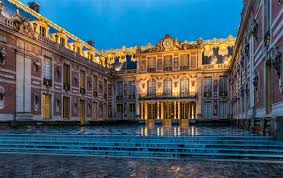
#97 – Vinicunca
Also called Montaña de Colores or Rainbow Mountain, Vinicunca is a mountain in Peru with an altitude of 5,200 meters above sea level. It is located in the Andes of Peru, in the Cusco Region.

#96 – The Ancient Theatre of Epidaurus
Designed by Polykleitos the Younger in the 4th century BC. The theatre is admired for its exceptional acoustics, which permit almost perfect intelligibility of unamplified spoken words from the proscenium or skēnē to all 14,000 spectators, regardless of their seating. Famously, tour guides have their groups scattered in the stands and show them how they can easily hear the sound of a match struck at center-stage.

#95 – Florialis Generica
A sculpture made of steel and aluminum located in Plaza de las Naciones Unidas, Avenida Figueroa Alcorta, Buenos Aires, a gift to the city by the Argentine architect Eduardo Catalano.
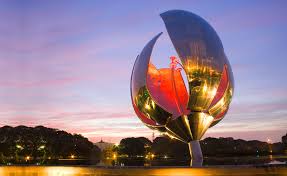
#94 – Kronborg Slot
A castle and stronghold in the town of Helsingør, Denmark. Immortalized as Elsinore in William Shakespeare’s play Hamlet, Kronborg is one of the most important Renaissance castles in Northern Europe and has been added to UNESCO’s World Heritage Sites list (2000).

#93 – Ubud Sacred Monkey Forest
The sanctuary or natural habitat of Balinese long tailed Monkey, located at Padangtegal Ubud, Bali, Indonesia. About 749 monkeys live in this sanctuary. Sacred Monkey Forest is the most popular tourist attraction in Ubud with about 120,000 visitors every month.

#92 – Cité de Carcassonne
A medieval citadel located in the French city of Carcassonne, in the department of Aude, Occitanie region. It is located on a hill on the right bank of the River Aude, in the south-east part of the city proper.

#91 – Český Krumlov Castle
Castle located in the city of Český Krumlov in the Czech Republic. It dates back to 1240 when the first castle was built by the Witigonen family, the main branch of the powerful Rosenberg family.

#90 – Gion District
A district of Kyoto, Japan, originally developed in the Sengoku period, in front of Yasaka Shrine(Gion Shrine). The district was built to accommodate the needs of travelers and visitors to the shrine. It eventually evolved to become one of the most exclusive and well-known geisha districts in all of Japan.

#89 – Reed Flute Cave
Also known as “the Palace of Natural Arts”. The cave is a landmark and tourist attraction in Guilin, Guangxi, China. It is a natural limestone cave with multicolored lighting and has been one of Guilin’s most interesting attractions for over 1200 years. It is over 180 million years old.

#88 – Książ Castle
The largest castle in the Silesia region, located in northern Wałbrzych in Lower Silesian Voivodeship, Poland. It lies within Książ Landscape Park, a protected area located in the Wałbrzyski Foothills. The castle overlooks the gorge of the Pełcznica river and is one of the Wałbrzych’s main tourist attractions.

#87 – Kilwa Kisiwani
A community on an Indian Ocean island off the southern coast of present-day Tanzania in eastern Africa. Historically, it was the center of the Kilwa Sultanate, a medieval sultanate whose authority at its height in the 13th-15th centuries CE stretched the entire length of the Swahili Coast. Kilwa Kisiwani has been designated by UNESCO as a World Heritage Site along with the nearby stonetown Songo Mnara.

#86 – Priekistolen
A tourist attraction in the municipality of Forsand in Rogaland county, Norway. Preikestolen is a steep cliff which rises 604 metres above the Lysefjorden. Atop the cliff, there is an almost flat top of approximately 25 by 25 metres.

#85 – Valley of the Kings
The valley stands on the west bank of the Nile, opposite Thebes (modern Luxor), within the heart of the Theban Necropolis in Egypt. The royal tombs are decorated with scenes from Egyptian mythology and give clues as to the beliefs and funerary rituals of the period. Almost all of the tombs seem to have been opened and robbed in antiquity, but they still give an idea of the opulence and power of the pharaohs.

#84 – Alexander Palace
A former imperial residence near the town of Tsarskoye Selo, on a plateau about 30 miles south (around 30 minutes by train) from the imperial capital city of St. Petersburg. It is known as the favourite residence of the last Russian Czar, Nicholas II (reigned 1894–1917), and his imperial family, and served as their initial place of imprisonment after the first of two of Russian Revolutions.

#83 – Monastery of Saint Simon
Also known as the Cave Church, is located in the Mokattam mountain in southeastern Cairo, Egypt, in an area that is known as ‘garbage city’ because of the large population of garbage collectors or Zabbaleen that live there. It is own of the largest Christian Churches in the Middle East.

#82 – Temppeliaukio Kirkko
A Lutheran church in the Töölö neighborhood of Helsinki, Finland. The church was designed by architects and brothers Timo and Tuomo Suomalainen and opened in 1969. Built directly into solid rock, it is also known as the Church of the Rock and Rock Church.

#81 – Spiš Castle
The ruins of Spiš Castle in eastern Slovakia form one of the largest castle sites in Central Europe. The castle is situated above the town of Spišské Podhradie and the village of Žehra. It was included in the UNESCO list of World Heritage Sites in 1993 and is one of the biggest European castles by area (41 426 m²).

#80 – St. Nicholas Church
The Gothic Revival Church of St. Nicholas ( was formerly one of the five Lutheran Hauptkirchen (main churches) in the city of Hamburg. The Bombing of Hamburg during World War II destroyed the bulk of the church and its rubble was removed leaving its crypt, its site and tall spired tower, largely hollow,save for a large set of bells, together serving as a memorial and an important architectural landmark.

#79 – Galtaji
An ancient Hindu pilgrimage about 10 km away from Jaipur, in the Indian state of Rajasthan. The site consists of a series of temples built into a narrow crevice in the ring of hills that surrounds Jaipur. A natural spring emerges high on the hill and flows downward, filling a series of sacred kunds (water tanks) in which pilgrims bathe. Visitors and pilgrims can ascend the crevasse, continuing past the highest water pool to a hilltop temple from there are views of Jaipur and its fortifications spreads out across the valley floor.

#78 – Amer Fort
A fort located in Amer, Rajasthan, India. The town of Amer was originally built by Meenas, and later it was ruled by Raja Man Singh I. Amer Fort is known for its artistic style elements. With its large ramparts and series of gates and cobbled paths, the fort overlooks Maota Lake, which is the main source of water for the Amer Palace.
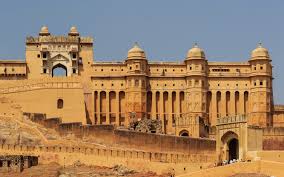
#77 – Schloss Neuschwanstein
A 19th-century Romanesque Revival palace on a rugged hill above the village of Hohenschwangau near Füssen in southwest Bavaria, Germany. The palace was commissioned by Ludwig II of Bavaria as a retreat and in honour of Richard Wagner.. The castle was intended as a home for the king, until he died in 1886. It was open to the public shortly after his death. Since then more than 61 million people have visited Neuschwanstein Castle.
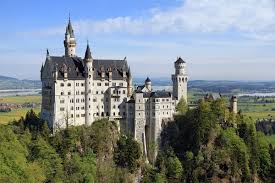
#76 – Daibutsu of Nara
A Buddhist temple complex that was once one of the powerful Seven Great Temples, located in the city of Nara, Japan. Its Great Buddha Hall houses the world’s largest bronze statue of the Buddha Vairocana, known in Japanese as Daibutsu . The temple also serves as the Japanese headquarters of the Kegon school of Buddhism. The temple is a listed UNESCO World Heritage Site as one of the “Historic Monuments of Ancient Nara”.

#75 – Cinque Terre
A string of centuries-old seaside villages on the rugged Italian Riviera coastline. In each of the 5 towns, colorful houses and vineyards cling to steep terraces, harbors are filled with fishing boats and trattorias turn out seafood specialties along with the Liguria region’s famous sauce, pesto. The Sentiero Azzurro cliffside hiking trail links the villages and offers sweeping sea vistas.

#74 – Wat Phra Dhammakya
Also known as the “The Temple of a Million Buddhas”, a Buddhist temple in Khlong Luang District, in the Pathum Thani Provincenorth of Bangkok, Thailand. Founded in 1970, it is the best-known and the fastest growing temple of the Dhammakaya Movement which aims to adapt its traditional Buddhist values in modern society. It deploys modern technology, marketing methods and interprets Buddhist doctrines in ways that have led to controversy and a government crackdown.

#73 – Trift Bridge
A pedestrian-only suspension bridge in the Swiss Alps. The bridge is a simple suspension bridge design spanning 170 metres at a height of 100 metres.

#72 – Van Gogh Museum
One of the many art museums in the Netherlands dedicated to the works of Vincent van Gogh and his contemporaries in Amsterdam in the Netherlands. The museum’s collection is the largest collection of Van Gogh’s paintings and drawings in the world. In 2017, the museum had 2.3 million visitors, and was the most visited museum in the Netherlands
 .
.
#71 – Jal Mahal
“The Water Palace”. A half submerged palace in the middle of the Man Sagar Lake in Jaipur city, the capital of the state of Rajasthan, India. The palace and the lake around it were renovated and enlarged in the 18th century by Maharaja Jai Singh II of Amber.

#70 – Am Phu Cave
A dark, humid underworld lurking with figurines of fantastical, fear-inducing demons as well as sinners enduring gruesome punishments and altars with candles and burning incense, this cave near Danang, Vietnam is a colorful embodiment of Hell with an enduring message that is at the core of Buddhist belief: every deed has its consequences.

#69 – Bosque Nuboso Monteverde
A Costa Rican reserve located along the Cordillera de Tilarán within the Puntarenas and Alajuela provinces. The Reserve consists of over 10,500 hectares (26,000 acres) of cloud forest, An extremely high biodiversity, consisting of over 2,500 plant species (including the most orchid species in a single place), 100 species of mammals, 400 bird species, 120 reptilian and amphibian species, and thousands of insects, has drawn both scientists and tourists alike.

#68 – Vasamuseet
A maritime museum in Stockholm, Sweden. Located on the island of Djurgården, the museum displays the only almost fully intact 17th century ship that has ever been salvaged, the 64-gun warship Vasa that sank on her maiden voyage in 1628.

#67 – Kuang Si Waterfall
A three levelled waterfall about 29 kilometres south of Luang Prabang, Laos. These waterfalls are a favourite side trip for tourists in Luang Prabang. The falls begin in shallow pools atop a steep hillside.

#66 – Colosseum
One of the New “Seven Wonders of the World”. An oval amphitheatre in the centre of the city of Rome, Italy. Built of travertine, tuff, and brick-faced concrete. It is the largest amphitheatre ever built. The Colosseum is situated just east of the Roman Forum.
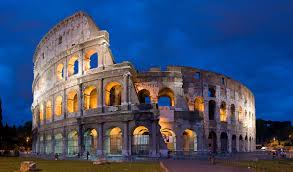
#65 – The Blue Mosque and Hagia Sophia
A historic mosque located in Istanbul, Turkey. A popular tourist site, the Sultan Ahmed Mosque continues to function as a mosque today. The Blue Mosque, as it is popularly known, was constructed between 1609 and 1616 during the rule of Ahmed I. Its Külliye contains Ahmed’s tomb, a madrasah and a hospice. Right next door is Hagia Sophia, a museum and former cathedral and mosque built in 537 AD and once the largest building in the world.

#64 – Mont Saint Michel
An island and mainland commune in Normandy, France. The island is located about one kilometer (0.6 miles) off the country’s northwestern coast, at the mouth of the Couesnon River near Avranches and is 7 hectares in area. As of 2015, the island has a population of 50.

#63 – The Vatican Museums
Christian and art museums located within the city boundaries of the Vatican City. They display works from the immense collection amassed by popes throughout the centuries including several of the most renowned Roman sculptures and most important masterpieces of Renaissance art in the world. The museums contain roughly 70,000 works, of which 20,000 are on display.

#62 – Dashashwamedh Ghat
The main ghat in Varanasi, India on the Ganges River. It is located close to Vishwanath Temple and is probably the most spectacular ghat. Two Hindu legends are associated with it: According to one, Lord Brahma created it to welcome Lord Shiva. According to another legend, Lord Brahma sacrificed ten horses during Dasa-Ashwamedha yajna performed here.

#61 – Wieliczka Salt Mine
The town of Wieliczka, southern Poland, lies within the Kraków metropolitan area. Sodium chloride was formerly produced there from the upwelling brine – and had been since Neolithic times. The mine is now one of the largest tourist attractions in Poland, listed as a World Heritage site by UNESCO and visited by over 1 million tourists each year.
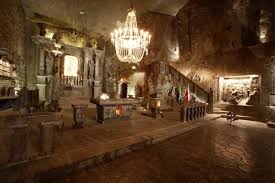
#60 – Fenghuang Ancient Town
An old town built up in Qing Dynasty, is still being kept in its original appearance with 300 years passed. The ancient town is located in the southwest of Hunan Province, China bordering the prefecture-level cities of Huaihua to the southeast and Tongren (Guizhou) to the west.

#59 – Eiffel Tower
A wrought-iron lattice tower on the Champ de Mars in Paris, France. It is named after the engineer Gustave Eiffel, whose company designed and built the tower.

#58 – Terracotta Army
A collection of terracotta sculptures depicting the armies of Qin Shi Huang, the first Emperor of China. It is a form of funerary art buried with the emperor in 210–209 BCE with the purpose of protecting the emperor in his afterlife. The figures were discovered in 1974 by local farmers in Lintong County, outside Xi’an, Shaanxi, China.

#57 – Lotus Temple
A Bahá’í House of Worship in New Delhi, India that was dedicated in December 1986. Notable for its flowerlike shape, it has become a prominent attraction in the city. Like all Bahá’í Houses of Worship, the Lotus Temple is open to all, regardless of religion or any other qualification. A CNN report referred to it as the most visited building in the world.

#56 – Hallelujah Mountain
A 1,080 metres quartz-sandstone pillar, located in the Zhangjiajie National Forest Park, in the Wulingyuan Area, in northwestern Hunan Province, China. It was renamed to its present name in January 2010 for having served as inspiration for the “Hallelujah Mountains” in the film Avatar, as well as to show appreciation to the social message present therein. Previously, it was known as the Southern Sky Column.

#55 – Trakai Island Castle
An island castle located in Trakai, Lithuania, on an island in Lake Galvė. The construction of the stone castle was begun in the 14th century by Kęstutis, and around 1409 major works were completed by his son Vytautas the Great, who died in this castle in 1430. Trakai was one of the main centers of the Grand Duchy of Lithuania and the castle held great strategic importance. In Eastern Europe it is the only island castle.

#54 – Abel Tasman National Park
A wilderness reserve at the north end of New Zealand’s South Island. It’s known for the Abel Tasman Coast Track, a long trail winding over beaches and across ridges between Marahau in the south and Wainui in the north. The headland at Separation Point is home to New Zealand fur seal colonies. Little blue penguins, bottlenose dolphins and seals inhabit the Tonga Island Marine Reserve.

#53 – Batu Caves
A limestone hill that has a series of caves and cave temples in Gombak, Selangor, Malaysia. It takes its name from the Sungai Batu, which flows past the hill. It is the tenth limestone hill from Ampang. Batu Caves is also the name of a nearby village.

#52 – Gardens by the Bay
A nature park spanning 101 hectares of reclaimed land in the Central Region of Singapore, adjacent to the Marina Reservoir. The park consists of three waterfront gardens: Bay South Garden, Bay East Garden and Bay Central Garden. The largest of the gardens is Bay South Garden at 54 hectares.

#51 – Te Papa Tongarewa
New Zealand’s national museum, located in Wellington. Known as Te Papa, or “Our Place”, it opened in 1998 after the merging of the National Museum and the National Art Gallery. More than 1.5 million people visit every year. It houses the largest known preserved Giant Squid specimen in the world.
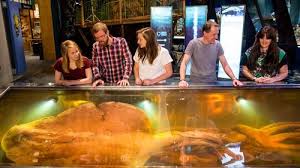
#50 – Himeji Castle
A hilltop Japanese castle complex situated in the city of Himeji which is located in the Hyōgo Prefecture of Japan. The castle is regarded as the finest surviving example of Japanese castle architecture, comprising a network of 83 rooms with advanced defensive systems from the feudal period. The castle is frequently known as Hakuro-jō or Shirasagi-jō (“White Egret Castle” or “White Heron Castle”) because of its brilliant white exterior and supposed resemblance to a bird taking flight.

#49 – Lake Wanaka
A famous New Zealand site Located in the Otago region, at an altitude of 278 meters. Covering an area of 192 km², it is New Zealand’s fourth largest lake, estimated to be more than 300 m deep. Its name is Māori, a corruption of Oanaka. The town near the foot of the lake is also called Wanaka.

#48 – Sintra
A resort town in the foothills of Portugal’s Sintra Mountains, near the capital, Lisbon. A longtime royal sanctuary, its forested terrain is studded with pastel-colored villas and palaces. The Moorish- and Manueline-style Sintra National Palace is distinguished by dramatic twin chimneys and elaborate tilework. The hilltop 19th-century Pena National Palace is known for a whimsical design and sweeping views.

#47 – Aitutake Lagoon
Aitutake is famous for its turquoise central lagoon, uninhabited islands and palm-fringed beaches. Another advantage is that until now it has been spared by mass tourism. Noteworthy also are an old church (the oldest in the Cook Islands) and some gigantic Banyan trees
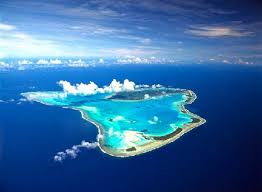
#46 – The Summer Palace
A vast ensemble of lakes, gardens and palaces in Beijing. It was an imperial garden in the Qing Dynasty. Mainly dominated by Longevity Hill and Kunming Lake, it covers an expanse of 2.9 square kilometres (1.1 sq mi), three-quarters of which is water.

#45 – The Blue Grotto
A sea cave on the coast of the island of Capri, southern Italy. Sunlight, passing through an underwater cavity and shining through the seawater, creates a blue reflection that illuminates the cavern.

#44 – Delphi
The ancient sanctuary that grew rich as the seat of Pythia, the oracle who was consulted about important decisions throughout the ancient classical world. It occupies an impressive site on the south-western slope of Mount Parnassus, overlooking the coastal plain to the south and the valley of Phocis. It is recognised by UNESCO as a World Heritage Site in having had a phenomenal influence in the ancient world.
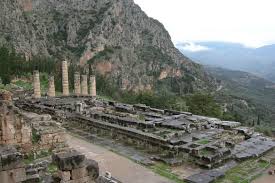
#43 – Predjama Castle
A Renaissance castle built within a cave mouth in south-central Slovenia, in the historical region of Inner Carniola. It is located in the village of Predjama, approximately 11 kilometres from the town of Postojna and 9 kilometres from Postojna Cave.

#42 – Eisreisenwelt
The Eisriesenwelt (German for “World of the Ice Giants”) is a natural limestone and ice cave located in Werfen, Austria, about 40 km south of Salzburg. The cave is inside the Hochkogel mountain in the Tennengebirge section of the Alps. It is the largest ice cave in the world, extending more than 42 km and visited by about 200,000 tourists every year.

#41 – Museumsquartier
An area in Vienna, Austria home to a range of installations from large art museums like the Leopold Museum and the MUMOK (Museum of Modern Art Ludwig Foundation Vienna) to contemporary exhibition spaces like the Kunsthalle Wien and festivals like the Wiener Festwochen and the Vienna Film Festival. Highlights include an international, state-of-the-art centre for dance, production studios for new media, artist studios for artists-in-residence, outstanding art and cultural facilities designed for children.

#40 – Guggenheim Museum
A museum of modern and contemporary art designed by Canadian-American architect Frank Gehry, and located in Bilbao, Basque Country, Spain. Built alongside the Nervion River, which runs through the city of Bilbao to the Cantabrian Sea, it is one of several museums belonging to the Solomon R. Guggenheim Foundation and features permanent and visiting exhibits of works by Spanish and international artists. It is one of the largest museums in Spain.

#39 – Real Alcazar
A royal palace in Seville, Spain, built for the Christian king Peter of Castile. It was built by Castilian Christians on the site of an Abbadid Muslim residential fortress destroyed after the Christian conquest of Seville. It is the oldest royal palace still in use in Europe, and was registered in 1987 by UNESCO as a World Heritage Site, along with the adjoining Seville Cathedral and the General Archive of the Indies.

#38 – Santorini Island
One of the Cyclades islands in the Aegean Sea. It was devastated by a volcanic eruption in the 16th century BC, forever shaping its rugged landscape. The whitewashed, cubiform houses of its 2 principal towns, Fira and Oia, cling to cliffs above an underwater caldera. They overlook the sea, small islands to the west and beaches made up of black, red and white lava pebbles.

#37 – Melk Abbey
A Benedictine abbey above the town of Melk, Lower Austria, Austria, on a rocky outcrop overlooking the Danube river, adjoining the Wachau valley. The abbey contains the tomb of Saint Coloman of Stockerau and the remains of several members of the House of Babenberg, Austria’s first ruling dynasty.

#36 – Grand Buddha
A 71-metre tall stone statue, built between 713 and 803, depicting Maitreya. It is carved out of a cliff face of Cretaceous red bed sandstones that lies at the confluence of the Min River and Dadu River in the southern part of Sichuan province in China, near the city of Leshan.

#35 – Kinkaku-ji
Officially named Rokuon-ji (literally “Deer Garden Temple”), Kinkaku-ji is a Zen Buddhist temple in Kyoto, Japan. It is one of the most popular buildings in Japan, attracting a large number of visitors annually. It is designated as a National Special Historic Site, a National Special Landscape and is one of 17 locations making up the Historic Monuments of Ancient Kyoto which are World Heritage Sites.

#34 – Salzwelten
An underground salt mine located in the Dürrnberg plateau above Hallein, Austria. The mine has been worked for over 7,000 years since the time of the Celtic tribes and earlier. It helped ensure nearby Salzburg would become a powerful trading community. Since World War I, it has served as a mining museum, known for its long wooden slides between levels.

#33 – The Sunken City of Baia
An ancient Roman town situated on the northwest shore of the Gulf of Naples, and now in the comune of Bacoli. It was a fashionable resort for centuries in antiquity, notorious for its hedonistic offerings and the attendant rumours of corruption and scandal. The lower part of the town later became submerged in the sea due to local volcanic, bradyseismic activity which raised or lowered the land, and recent underwater archaeology has revealed many of the fine buildings now protected in the submerged archaeological park.

#32 – St. Peter’s Basilica
An Italian Renaissance church in Vatican City, the papal enclave within the city of Rome. St. Peter’s is the most renowned work of Renaissance architecture and the largest church in the world. While it is neither the mother church of the Catholic Church nor the cathedral of the Diocese of Rome, St. Peter’s is regarded as one of the holiest Catholic shrines. It has been described as “holding a unique position in the Christian world” and as “the greatest of all churches of Christendom”.

#31 – The Forbidden City
A palace complex in central Beijing, China. The former Chinese imperial palace from the Ming dynasty to the end of the Qing dynasty it now houses the Palace Museum. The Forbidden City served as the home of emperors and their households as well as the ceremonial and political center of Chinese government for almost 500 years. The Forbidden City was declared a World Heritage Site in 1987 and is listed by UNESCO as the largest collection of preserved ancient wooden structures in the world.

#30 – Angkor Temples
A temple complex in Cambodia and one of the largest religious monuments in the world. Originally constructed as a Hindu temple dedicated to the god Vishnu for the Khmer Empire, it was gradually transformed into a Buddhist temple towards the end of the 12th century. The temple is at the top of the high classical style of Khmer architecture. It has become a symbol of Cambodia appearing on its national flag, and it is the country’s prime attraction for visitors.

#29 – Iguazu Falls
Waterfalls of the Iguazu River on the border of the Argentine province of Misiones and the Brazilian state of Paraná. Together, they make up the largest waterfall system in the world. The falls divide the river into the upper and lower Iguazu. Below its confluence with the San Antonio River, the Iguazu River forms the boundary between Argentina and Brazil.

#28 – Alhambra
A palace and fortress complex located in Spain. It was originally constructed as a small fortress in AD 889 on the remains of Roman fortifications, and then largely ignored until its ruins were renovated and rebuilt in the mid-13th century by the Nasrid emir Mohammed ben Al-Ahmar of the Emirate of Granada, who built its current palace and walls. It was converted into a royal palace in 1333 by Yusuf I, Sultan of Granada.

#27 – Leaning Tower of Pisa
The campanile, or freestanding bell tower, of the cathedral of the Italian city of Pisa, known worldwide for its unintended tilt.

#26 – Undara Volcanic National Park
A national park in North Queensland, Australia. It is notable for its lava tubes and gem fossicking. Minerals found there include topaz, moonstone, peridot, aquamarine, garnet, quartz and gold. The park contains the remains of the Earth’s longest flow of lava originating from a single volcanic crater. The lava flow is about 160 km long.

#25 – Budapest Thermal Baths
Budapest has had several great thermal baths for many centuries. The Turkish baths along the river Danube are still functional and much favored. But more than a thousand years before the Turks, the Romans and even before them, the Celts have been enjoying the warm spring waters here as baths, healing waters and drinks.

#24 – Horyu-ji
A Buddhist temple that was once one of the powerful Seven Great Temples, in Ikaruga, Nara Prefecture, Japan. Its full name is Hōryū Gakumonji or Learning Temple of the Flourishing Law, the complex serving as both a seminary and monastery. The temple’s pagoda is widely acknowledged to be the oldest wooden building existing in the world, underscoring Hōryū-ji’s place as one of the most celebrated temples in Japan.
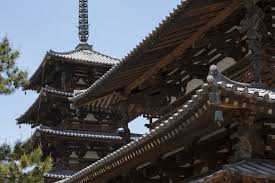
#23 – Petra
Another of the new “Seven Wonders”, Petra was originally known to its inhabitants as ‘Raqmu’, it is a historical and archaeological city in southern Jordan. Petra is believed to have been settled as early as 9,000 BC, and it was possibly established in the 4th century BC as the capital city of the Nabataean Kingdom. The Nabataeans were nomadic Arabs who invested in Petra’s proximity to the trade routes by establishing it as a major regional trading hub.

#22 – Hill of Crosses
A site of pilgrimage about 12 km north of the city of Šiauliai, in northern Lithuania. The precise origin of the practice of leaving crosses on the hill is uncertain, but it is believed that the first crosses were placed on the former Jurgaičiai or Domantai hill fort after the 1831 Uprising. Over the generations, not only crosses and crucifixes, but statues of the Virgin Mary, carvings of Lithuanian patriots and thousands of tiny effigies and rosaries have been brought here by Catholic pilgrims. The exact number of crosses is unknown, but estimates put it at about 55,000 in 1990 and 100,000 in 2006.

#21 – Sedlec Ossuary
A small Roman Catholic chapel, located beneath the Cemetery Church of All Saints , part of the former Sedlec Abbey in Sedlec, a suburb of Kutná Hora in the Czech Republic. The ossuary is estimated to contain the skeletons of between 40,000 and 70,000 people, whose bones have, in many cases, been artistically arranged to form decorations and furnishings for the chapel.

#20 – Lake Natron
A mineral-rich soda lake in northern Tanzania, at the border with Kenya. It’s a breeding ground for hundreds of thousands of lesser flamingos, despite the highly alkaline state of the striking red waters. It sits below Ol Doinyo Lengai, a soaring active volcano in the Rift Valley. Trails lead from the lake to the Engero Sero waterfalls, which flow over craggy rocks into a natural pool.

#19 – Notre Dame
A medieval Catholic cathedral on the Île de la Cité in the fourth arrondissement of Paris, France. Despite roof damage from the recent fire, this one remains close to the top of our list. The cathedral is widely considered to be one of the finest examples of French Gothic architecture. The innovative use of the rib vault and flying buttress, the enormous and colorful rose windows, and the naturalism and abundance of its sculptural decoration all set it apart from earlier Romanesque architecture.

#18 – The Church on the Spilled Blood
One of the main sights of Saint Petersburg, Russia. Other names include the Temple of the Savior on Spilled Blood, and the Cathedral of the Resurrection of Christ . This church was built on the site where Emperor Alexander II was fatally wounded by political nihilists in March 1881. The church was built between 1883 and 1907. The construction was funded by the imperial family.

#17 – Cristo Redentor
The third of the new “Seven Wonders” on our list. An Art Deco statue of Jesus Christ in Rio de Janeiro, Brazil, created by French sculptor Paul Landowski and built by Brazilian engineer Heitor da Silva Costa, in collaboration with French engineer Albert Caquot. Romanian sculptor Gheorghe Leonida fashioned the face.

#16 – The Black Forest
A mountainous region in southwest Germany, bordering France. Known for its dense, evergreen forests and picturesque villages, it is often associated with the Brothers Grimm fairy tales. It’s renowned for its spas and the cuckoo clocks produced in the region since the 1700s. The region’s largest town, Freiburg, is filled with Gothic buildings and surrounded by vineyards.

#15 – Great Wall of China
The fourth of our “Seven Wonders”, a series of fortifications over 20,000 km in length made of stone, brick, tamped earth, wood, and other materials, generally built along an east-to-west line across the historical northern borders of China to protect the Chinese states and empires against the raids and invasions of the various nomadic groups of the Eurasian Steppe with an eye to expansion.
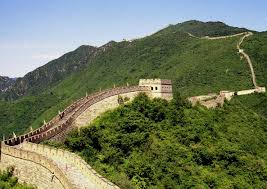
#14 – Macchu Picchu
The fifth of our “Seven Wonders”, a 15th-century Inca citadel, located in the Eastern Cordillera of southern Peru, on a mountain ridge 2,430 metres above sea level. It is located in the Cusco Region, Urubamba Province, Machu Picchu District in Peru, above the Sacred Valley, which is 80 kilometres northwest of Cuzco and through which the Urubamba River flows, which cuts through the Cordillera and originates a canyon with a tropical mountain climate.
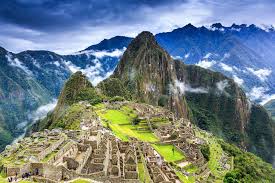
#13 – Great Barrier Reef
Off the coast of Queensland in northeastern Australia, is the largest living thing on Earth, and even visible from outer space. The 2,300km-long ecosystem comprises thousands of reefs and hundreds of islands made of over 600 types of hard and soft coral. It’s home to countless species of colourful fish, molluscs and starfish, plus turtles, dolphins and sharks.

#12 – Sagrada Familia
A large unfinished Roman Catholic church in Barcelona, designed by Catalan architect Antoni Gaudí (1852–1926). Gaudí’s work on the building is part of a UNESCO World Heritage Site, and in November 2010 Pope Benedict XVI consecrated and proclaimed it a minor basilica.

#11 – Chapel Oak
On the other end of the spectrum of amazing places of worship, the Chêne chapelle is an oak tree located in Allouville-Bellefosse in Seine-Maritime, France. The oak tree is between 800 and 1,200 years old. Its hollow trunk hosts two chapels, which were built there in 1669 and are still used: Notre Dame de la Paix (“Our Lady of Peace”) and the Chambre de l’Ermite (“Hermit’s room”).A spiral staircase around the trunk provides access to the chapels.
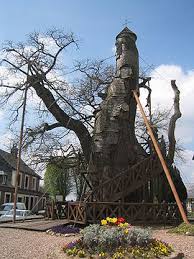
#10 – Flander’s Fields
A World War I cemetery on the southeast edge of the town of Waregem, Belgium. Poppy flowers began to grow after the burial of the fallen soldiers. The site was made famous by “In Flanders Fields”, a poem about World War I written by Canadian Lieutenant Colonel John McCrae.

#9 – Arishiyama’s Bamboo Grove
A natural forest of bamboo in Arashiyama, Kyoto, Japan. The forest consists of several pathways for tourists and visitors. The Ministry of the Environment considers it a part of the soundscape of Japan.

#8 – The Great Pyramids
An archaeological site on the Giza Plateau, on the outskirts of Cairo, Egypt. It includes the three Great Pyramids(Khufu/Cheops, Khafre/Chephren and Menkaure/Mykerinos), the Great Sphinx, several cemeteries, a workers’ village and an industrial complex. The pyramids, which have historically been common as emblems of ancient Egypt in the Western imagination were popularised in Hellenistic times, when the Great Pyramid was listed by Antipater of Sidon as one of the original Seven Wonders of the World. It is by far the oldest of the ancient Wonders and the only one still in existence.

#7 – Salar de Uyini
The world’s largest salt flat, located amidst the Andes in southwest Bolivia. It’s the legacy of a prehistoric lake that went dry, leaving behind a desertlike, nearly 11,000-sq.-km. landscape of bright-white salt, rock formations and cacti-studded islands. Its otherworldly expanse can be observed from central Incahuasi Island. Though wildlife is rare in this unique ecosystem, it harbors many pink flamingos.
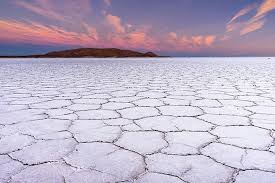
#6 – Mount Fuji National Park
A national park in Yamanashi, Shizuoka, and Kanagawa Prefectures, and western Tokyo Metropolis, Japan. Fuji-Hakone-Izu National Park covers 1,227 square kilometres. The park includes a variety of geographic features including natural hot springs, coastlines, mountainous areas, lakes, and more than 1000 volcanic islands. Vegetation in the park ranges from species of mountainous trees to the subtropical vegetation of the Izu Islands

#5 – Hiroshima Peace Memorial
Site of one of history’s great atrocities, the peace memorial in Hiroshima, Japan was designated a UNESCO World Heritage Site in 1996. The ruin of the hall serves as a memorial to the people who were killed in the atomic bombing of Hiroshima on 6 August 1945. Over 70,000 people were killed instantly, and another 70,000 suffered fatal injuries from the radiation.

#4 – Camp Nou
Caleb’s top pick on the list, Camp Nou has been the home stadium of storied FC Barcelona since its completion in 1957. With a seating capacity of 99,354, it is the largest stadium in Spain and Europe, and the third largest football stadium in the world in capacity.

#3 – Nicholas Flamel’s House
Kieran’s top pick is the house of Nicolas Flamel, a wealthy member of the Parisian bourgeoisie (and more importantly a fictional alchemist in the Harry Potter stories), commissioned the house after the death of his wife Pernelle in 1397, to accommodate the homeless.It was completed in 1407, as is inscribed on a frieze above the ground floor, and it is the best known and sole surviving of Flamel’s houses, yet he actually never lived there. The house is probably the oldest in Paris.

#2 – The Temples of Bagan
Bagan is an ancient city located in the Mandalay Region of Myanmar. From the 9th to 13th centuries, the city was the capital of the Pagan Kingdom, the first kingdom that unified the regions that would later constitute modern Myanmar. During the kingdom’s height between the 11th and 13th centuries, over 10,000 Buddhist temples, pagodas and monasteries were constructed in the Bagan plains alone, of which the remains of over 2,200 temples and pagodas still survive to the present day.
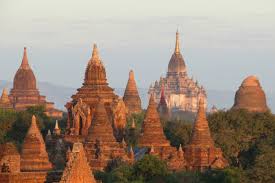
And, finally, our #1 pick………………… The Taj Mahal
That Taj Mahal is the sixth of the new “Seven Wonders” on our list (we won’t make it to the last (Chichen Itza in Mexico) on this trip). It is an ivory-white marble mausoleum and monument to love on the south bank of the Yamuna river in the Indian city of Agra. It was commissioned in 1632 by the Mughal emperor, Shah Jahan (reigned from 1628 to 1658), to house the tomb of his favourite wife, Mumtaz Mahal and also houses the tomb of Shah Jahan, the builder. The tomb is the centerpiece of a 17-hectare complex, which includes a mosque and a guest house, and is set in formal gardens bounded on three sides by a crenellated wall.

Well, there you have it – our most anticipated sights. Any thoughts on our rankings? Anything you think we missed? Feel free to drop us a comment on hope these give you an idea of what’s in store for us over the next 17 months.
Pingback: 100 Days to Go – Journey for Four
Absolutely amazing! I can’t wait to vicariously embark on this journey with all of you!! Uncle Scott will be totally proud that Flanders fields is in the top 10 ❤️❤️
LikeLiked by 1 person
Wonderful list – so much to see is this beautiful world of ours. So excited 4 u Robin (cruiso 😂) and family! Missing “Dead Sea” considerations or Jerusalem!
LikeLiked by 1 person
Thanks Royston – Hang tight for our Top 100 Activities list!!!
LikeLike
Ok, this is a great list, when are you leaving to this voyage, or doing it in shifts?
LikeLiked by 1 person
We leave on Jan 1! We’ll be gone the entire 17 months.
LikeLiked by 1 person
Alright Wendy, we LOVE this. We wish we could just pick up and leave, we do shifts, but soon retiring and will do more, but still will have to supplement our travels with some work, and I have to keep up my credentials so I have to work some. We cannot wait to see your trip blog!
LikeLike
What an amazing list! I’m really excited for all of you and can’t wait to read more about your travels!
LikeLiked by 1 person
I will be living vicariously through your updates. So many places on this list that I would dream of visiting! So excited for you guys
LikeLike
Pingback: One down… lots more to come – Journey for Four
Pingback: Walking in a Cloud (Forest) – Journey for Four
Pingback: An Incan Experience – Journey for Four
Pingback: Salt Flats, Desert, Volcanoes, Lagoons… – Journey for Four